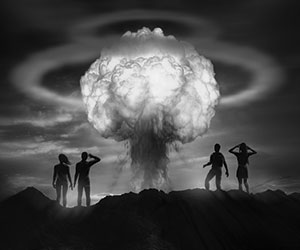Hiroshima
Select Format
Select Condition 
Book Overview
Pulitzer Prize-winning journalist and bestselling author John Hersey's seminal work of narrative nonfiction which has defined the way we think about nuclear warfare. "One of the great classics of the war" (The New Republic) that tells what happened in Hiroshima during World War II through the memories of the survivors of the first atomic bomb ever dropped on a city. "The perspective Hiroshima] offers from the bomb's actual...
Customer Reviews
"The hurt ones were quiet; no one wept, much less screamed in pain..."
Stunning
A book everyone should read atleast once
Hiroshima is a journalistic masterpiece.
Hiroshima in Context
Hiroshima Mentions in Our Blog

Featuring a glittering, star-studded cast, Christopher Nolan's brilliant new film charts the turbulent life of J. Robert Oppenheimer, the theoretical physicist who played a significant role in developing the first atomic bombs. If you enjoyed the movie, here's your chance to learn more about this fascinating chapter from history.






